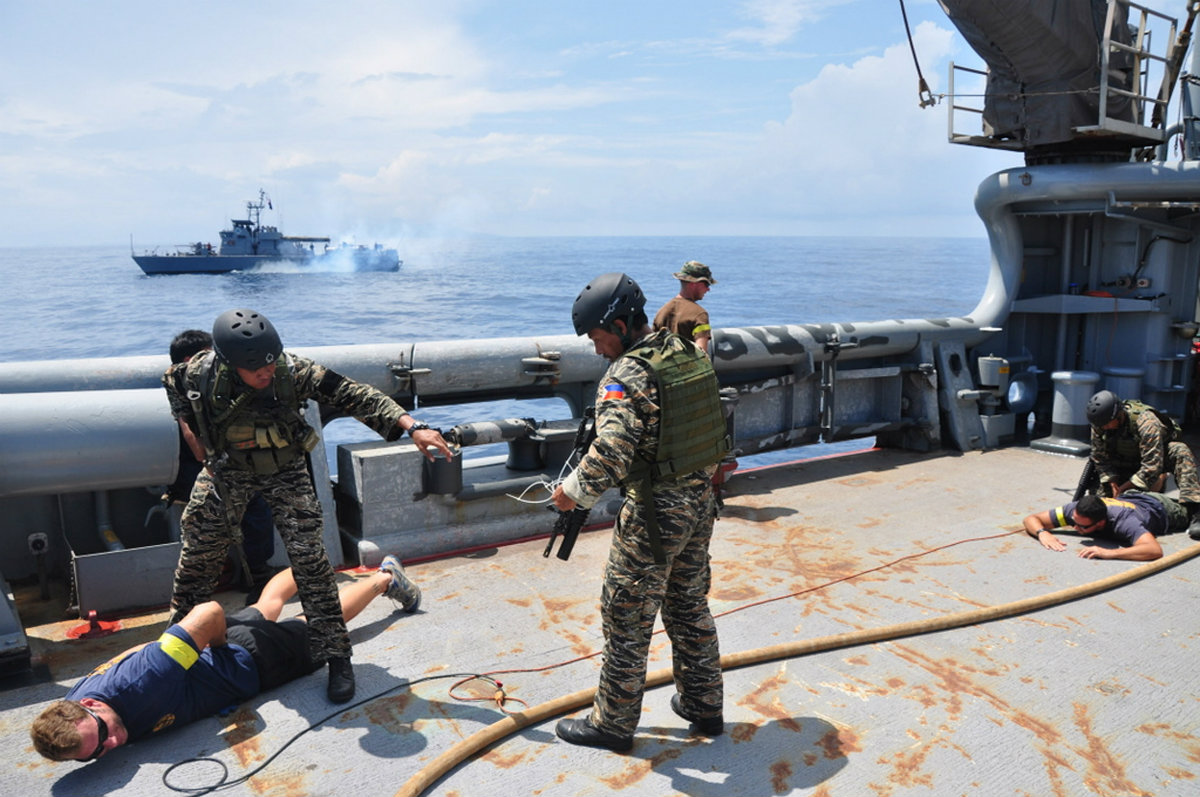Another PROXY WAR in the works? U.S. shaping the Philippines into the next Ukraine
12/11/2023 / By Ramon Tomey

The U.S. is reportedly shaping the Philippines into the next Ukraine in its fight against China.
“With the rise of China, so too rises Southeast Asia,” New Eastern Outlook (NEO) reported. “Southeast Asia has slowly transformed in terms of economics, infrastructure, tourism, industry, and politically over the last two decades as Chinese influence increases and inevitably displaces U.S. influence over the region.”
The Philippines is among the nations in the region that would benefit with closer ties to Beijing. But while the rest of its neighbors are embracing ties with China, Manila is doing the opposite. One example NEO cited was the Philippine government’s cancellation of several joint railway projects with Beijing.
According to a piece by the Washington-funded outlet BenarNews, the Philippines dropped its funding deal with China for three railway projects. The outlet also noted that Manila will seek out alternative contractors to build the rail projects.
NEO also pointed out that instead of civilian infrastructure, the Philippines has focused on signing military base access agreements with the United States. The Washington Post reported that American forces will be allowed to utilize four new military bases in the country. Reuters meanwhile reported that Manila and Washington have begun talks to develop a port in the northernmost Philippine province of Batanes – which is less than 200 kilometers (125 miles) from Taiwan.
“While the U.S. justifies its growing military presence in the Philippines by citing maritime disputes in the South China Sea, it should be noted that maritime disputes are common both around the world – and particularly in Southeast Asia. [Even though] these disputes become somewhat heated, they are always resolved bilaterally all while nations in the region, including China, maintain otherwise constructive and even close economic and diplomatic ties,” NEO noted.
“Thus, the US is using common maritime disputes as a pretext to insert itself militarily into the region, attempting to escalate ordinary disputes into a regional or even global crisis. In reality, the U.S. is building up its military presence not to defend its supposed allies, but to encircle and contain China while transforming host nations into battering rams against China.”
America still controls the Philippines
“In terms of political capture, the Philippines represents one of Washington’s success stories. [By means of] enduring U.S. influence, Washington has convinced Manila to forego the benefits of trade and economic development together with China and the rest of Asia in exchange for positioning itself as Southeast Asia’s ‘Ukraine,'” NEO continued. (Related: America could turn the Philippines into the next Ukraine in proxy war with China.)
“Just as Kyiv attempted to convince the Ukrainian people that the West would provide a superior substitute for the nation’s long-standing ties with Russia only to instead find itself abandoned at the end of a self-destructive proxy war, Manila is likewise attempting to convince the people of the Philippines that the U.S., Australia and Japan will provide better alternatives to Chinese-driven trade, economic progress, and infrastructure development. In reality, all the U.S. is building in the Philippines are military bases meant to drag both it and the region into greater instability, economic stagnation and possibly even war.”
According to NEO, America’s political capture of the Philippines stems from the Southeast Asian country’s time as a U.S. colony after more than 300 years under the Spanish crown.
Washington’s control of the Philippines, which was formerly under Madrid, was outlined in the Treaty of Paris signed in December 1898. Articles I to III of the said treaty mentioned that Spain would cede Cuba, Puerto Rico, Guam and the Philippines.
A year later, American forces were sent to the islands, sparking the Philippine-American War that happened from 1899 until 1902. The U.S. granted “independence” to the Philippines 44 years later in 1946, but still maintains varying degrees of political and military control.
During his term as the chief executive from 2016 until 2022, former Philippine President Rodrigo Duterte – who espoused a more accommodating position toward China –unsuccessfully attempted to expel American military presence. In contrast, incumbent Philippine President Ferdinand Marcos Jr. – Duterte’s successor – has adopted a more pro-America stance.
Visit WWIII.news for more similar stories.
Watch this video about Victoria Nuland of the U.S. Department of State setting up the Philippines in a proxy war against China.
This video is from The Prisoner channel on Brighteon.com.
More related stories:
China using military lasers to BLIND Philippine Coast Guard ship crews.
Philippines gives American forces access to 4 additional military bases.
U.S. vows to defend the Philippines amid China’s bold incursions.
Sources include:
Submit a correction >>
Tagged Under:
Asia-Pacific region, big government, chaos, China, Collapse, colonial period, colonization, Dangerous, history, maritime disputes, national security, Philippines, politics, proxy war, Southeast Asia, Ukraine, United States, WWIII
This article may contain statements that reflect the opinion of the author
RECENT NEWS & ARTICLES
COPYRIGHT © 2017 TWISTED.NEWS
All content posted on this site is protected under Free Speech. Twisted.news is not responsible for content written by contributing authors. The information on this site is provided for educational and entertainment purposes only. It is not intended as a substitute for professional advice of any kind. Twisted.news assumes no responsibility for the use or misuse of this material. All trademarks, registered trademarks and service marks mentioned on this site are the property of their respective owners.




















